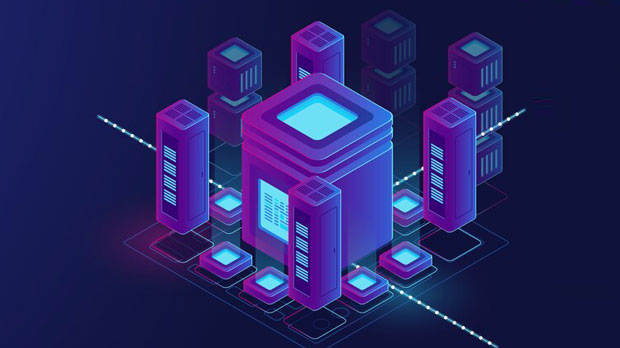In the world of enterprise network management, choosing the right proxy server can significantly impact performance, security, and overall efficiency. Squid Proxy and PYPROXY are two prominent choices for proxy solutions, each with its own strengths and ideal use cases. Squid Proxy is a well-established, open-source proxy server, known for its flexibility and wide adoption across various industries. On the other hand, PyProxy, a more modern and Python-based proxy tool, promises better integration with Python ecosystems and more advanced features in some contexts. This article will dive deeper into the strengths and weaknesses of both proxy solutions to help enterprises make an informed choice regarding deployment. Introduction to Proxy ServersProxy servers are essential components in network architecture, acting as intermediaries between users and the internet. Their primary role is to enhance privacy, provide caching services, manage bandwidth, and control internet access. While there are numerous proxy solutions available today, two notable ones stand out: Squid Proxy and PyProxy. Squid Proxy has been a staple in the industry for years, offering excellent performance and scalability. It is versatile, supporting a wide range of network protocols and is widely used in enterprises and data centers. In contrast, PyProxy, which leverages Python’s robust ecosystem, provides a more flexible and customizable solution but may not match Squid in terms of mature features and large-scale deployment.Overview of Squid ProxySquid Proxy has been around for a long time, first released in 1996, making it one of the oldest proxy servers available today. As a caching proxy server, Squid is primarily used to improve web performance by caching frequently accessed content. This reduces the load on the network, speeds up page load times, and enhances overall user experience. Squid also offers features like access control, content filtering, and traffic monitoring, which make it a strong candidate for businesses seeking a reliable, scalable proxy solution.The flexibility of Squid is one of its key selling points. It supports various protocols, including HTTP, HTTPS, FTP, and more, and can be configured to serve as a reverse proxy, forward proxy, or transparent proxy. Squid’s open-source nature allows businesses to customize it according to their specific needs, adding plugins or modifying configurations to improve functionality.Overview of PyProxyPyProxy, unlike Squid, is a more modern proxy server built using Python. Python’s growing popularity in the development community means that PyProxy benefits from seamless integration with other Python-based tools and frameworks. PyProxy allows for greater flexibility and customization because Python’s ecosystem is rich with libraries that can be leveraged for various tasks, such as logging, encryption, or data analysis. This is particularly beneficial for enterprises looking to implement complex, tailored solutions.One of the main advantages of PyProxy is its ability to integrate seamlessly into Python-based environments, especially for businesses that already use Python for other parts of their IT infrastructure. Additionally, PyProxy offers excellent support for modern web technologies and can be easily extended or modified to fit the needs of the business. However, since PyProxy is a relatively newer solution compared to Squid, its community support, documentation, and maturity may not be as robust.Performance ComparisonWhen considering proxy solutions, performance is one of the most critical factors. Squid Proxy is known for its high performance, particularly in large-scale deployments. Its caching capabilities significantly reduce the load on web servers, leading to faster response times for users. Furthermore, Squid’s ability to handle millions of simultaneous connections efficiently makes it ideal for large organizations or service providers.PyProxy, being built on Python, may not be as optimized for raw performance as Squid. While it can handle various tasks efficiently, it might face performance bottlenecks in very high-traffic scenarios due to the inherent limitations of Python. Python’s Global Interpreter Lock (GIL) can limit its ability to fully utilize multi-core processors, which may affect PyProxy’s ability to scale effectively in large enterprises.ScalabilityScalability is another essential factor when evaluating proxy solutions. Squid Proxy excels in this area, offering a wide range of features that support enterprise-level deployments. It supports hierarchical caching, which enables it to scale effectively in distributed environments, making it suitable for large organizations or data centers. Squid can also be configured to handle millions of requests per second, ensuring that it can scale with the growing demands of a business.On the other hand, PyProxy, although customizable and flexible, may not offer the same level of scalability as Squid. While it can be extended to meet specific needs, its scalability is more dependent on the Python environment, which might not be optimized for large-scale deployments. For enterprises expecting significant growth or handling vast amounts of traffic, Squid would likely be the better choice due to its proven scalability.Ease of Configuration and CustomizationWhen it comes to ease of configuration, Squid Proxy is relatively straightforward, but it does require some expertise to fully optimize. Its configuration files can be complex, and businesses often need to fine-tune the settings to get the best performance. However, for organizations with skilled network administrators, Squid offers a wealth of customization options, allowing fine-grained control over traffic routing, caching, and security policies.PyProxy’s major advantage in this area is its flexibility. Since it is written in Python, it can be easily modified or extended using Python’s vast array of libraries. This makes PyProxy an attractive option for businesses with specific requirements that cannot be fulfilled by traditional proxy servers. The ability to programmatically control and customize the proxy’s behavior is a significant benefit, especially for companies with specialized needs.Security FeaturesBoth Squid Proxy and PyProxy offer robust security features, but their approaches differ. Squid Proxy comes with a wide range of built-in security tools, including access control lists (ACLs), support for SSL/TLS encryption, and the ability to filter content based on user-defined rules. These features help protect the network from malicious activities and ensure that only authorized users can access sensitive data.PyProxy, being a more modern solution, benefits from Python’s extensive libraries for encryption, authentication, and security. However, it may not have as comprehensive a set of built-in security features as Squid. While PyProxy can be customized to include advanced security features, it may require additional development effort to match the security capabilities of Squid out-of-the-box.Cost ConsiderationsBoth Squid Proxy and PyProxy are open-source solutions, meaning they are free to use. However, enterprises should consider the costs associated with deployment and maintenance. Squid Proxy’s long-standing presence in the market means that it has extensive community support, which can reduce the costs associated with troubleshooting and resolving issues. On the other hand, PyProxy may require more specialized development efforts, especially if the enterprise needs to build custom features or integrations.Enterprises should also factor in the costs related to infrastructure, training, and ongoing maintenance. Squid Proxy is well-documented and widely used, making it easier to find skilled personnel and support. PyProxy, being a newer tool, may require additional investment in training and development to ensure that the team can fully leverage its potential.ConclusionBoth Squid Proxy and PyProxy offer distinct advantages depending on the specific needs of the enterprise. Squid Proxy is the more mature and proven solution, with extensive support for scalability, performance, and security. It is ideal for large organizations that need a reliable, high-performance proxy solution. On the other hand, PyProxy offers greater flexibility and integration with Python-based systems, making it an excellent choice for businesses looking for customization and advanced features, especially if they already rely heavily on Python.Ultimately, the choice between Squid Proxy and PyProxy depends on the organization’s specific requirements, existing infrastructure, and long-term goals. For enterprises requiring a scalable and robust proxy solution with a proven track record, Squid Proxy is likely the better choice. However, for companies seeking a more flexible, Python-based solution with room for customization, PyProxy could be the right fit.
Jul 31, 2025


































































